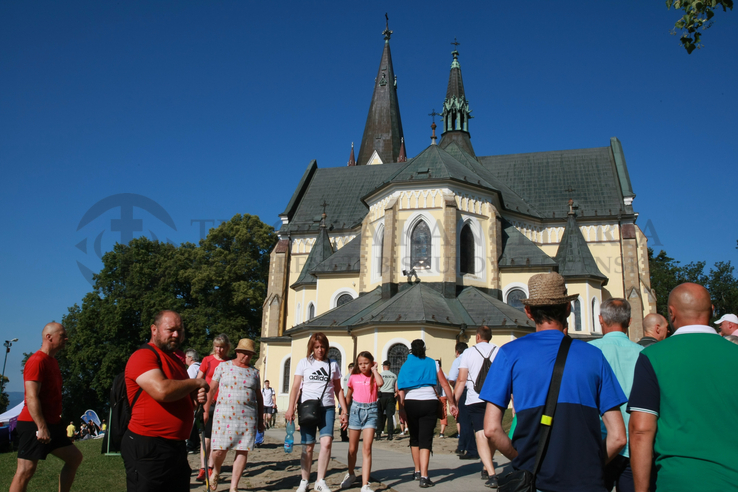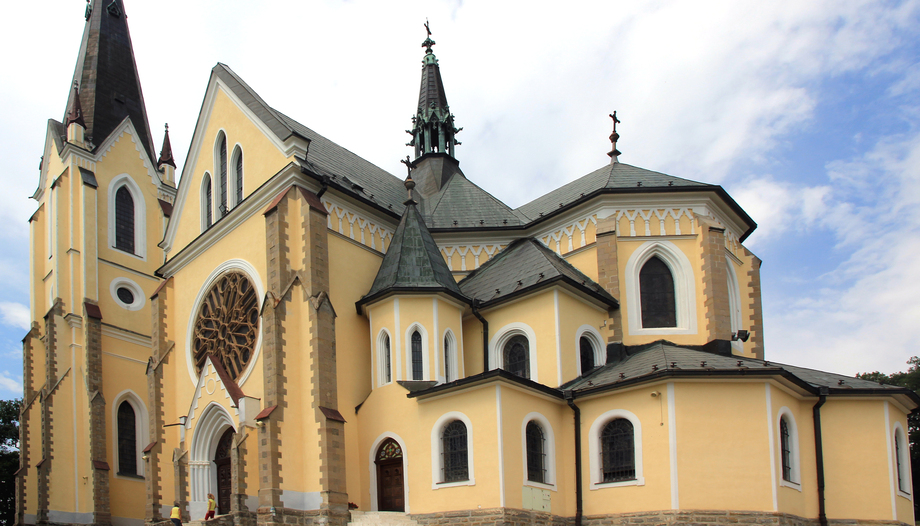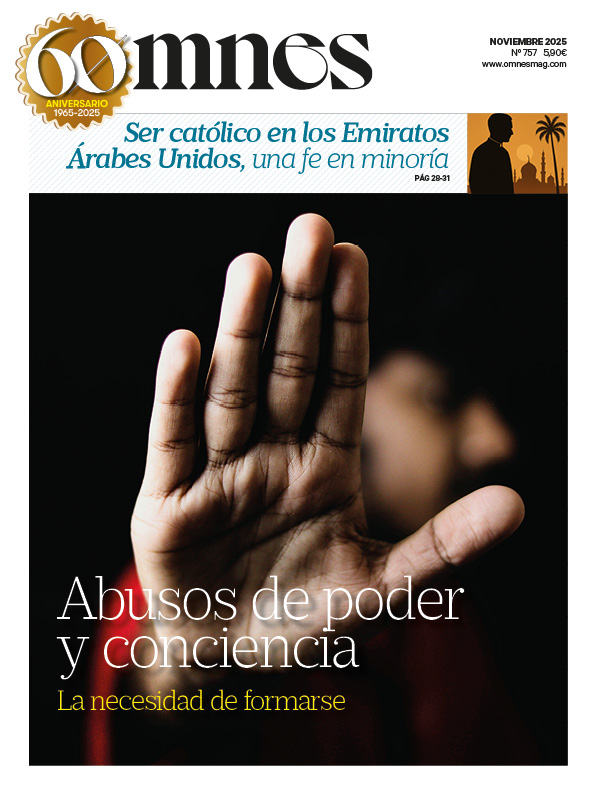On July 6 and 7, the town of Levoča in northern Slovakia witnessed one of the most well-attended Marian pilgrimages in Europa. More than five hundred thousand people have attended the religious ceremonies and activities of the pilgrimage. In a country with a population of five million, this influx highlights the deep devotion and spiritual significance that the pilgrimage has for Slovaks. During these days, the sacrament of confession has played a prominent role, with numerous priests available to offer this service to pilgrims both day and night.
The program of the pilgrimage was varied: on Saturday, in addition to the various Masses, including one in the Greek rite, there was a mini festival of Christian music that attracted many young people. On Sunday there were events such as the Stations of the Cross, the prayer of the Liturgy of the Hours, the recitation of the rosary and, at the end, a solemn Mass presided over by the Bishop of Spiš, Msgr. František Trstenský.
In his homily, Bishop Trstenský encouraged those present to be faithful to the Gospel and to proclaim it with joy; he stressed that this joyful attitude is a necessity of our times: "Let us not be afraid to live our faith with joy, to rejoice in it, because the Lord is with you. I wish you the joy of evangelization. Our Slovakia does not need sad proclaimers, but joyful ones, who have themselves experienced the joy of proclamation".
History of the Marian pilgrimage to Levoča.
The Marian pilgrimage to Levoča, which is held annually around the feast of St. Cyril and St. Methodius (celebrated in Slovakia on July 5), is one of the oldest and most significant pilgrimage events in Slovakia. Its roots go back to the Middle Ages, when in 1247 the first chapel dedicated to the Virgin Mary was built in Levoča (in the north-eastern region of Spiš). This act was a response to the numerous miracles that allegedly occurred at this place. The pilgrimage quickly became an important spiritual event that attracted believers from all over the region and even from neighboring countries.
The Levoča pilgrimage continued even during the Turkish invasions, when believers sought refuge and spiritual support. In the 17th century, a Baroque basilica was built on Mariánska Hora hill, which still serves today as the main pilgrimage church. This basilica is a true architectural gem that offers its visitors not only a spiritual experience, but also an aesthetic delight with its magnificent architecture and decoration.
The significance of this pilgrimage site did not go unnoticed in Rome. Pope John Paul II elevated the church of the Visitation of the Virgin Mary to a minor basilica (basilica minor) on January 26, 1984. This title recognizes the importance and spiritual significance of this place. Eleven years later, on July 3, 1995, the largest pilgrimage in the history of Levoča was held, in which more than 650,000 people participated in the presence of the Pope himself.
Prominent personalities
The Marian pilgrimage to Levoča has attracted many prominent personalities from various areas of public life. Among the most important of these is Pope John Paul II, who visited Levoča during his. apostolic journey to Slovakia in 1995. His presence gave the pilgrimage a special significance and strengthened its international dimension. In addition, the pilgrimage is regularly attended by bishops, priests and other spiritual leaders who strengthen with their presence the spiritual significance of this event.
Among other prominent personalities who have visited Levoča during the Marian pilgrimage are various Slovak politicians, cultural personalities and artists, who come not only in search of spiritual inspiration, but also to support tradition and cultural heritage.
Pilgrimage during communism
The Marian pilgrimage to Levoča acquired special significance during the communist era, when the regime repressed and policed religious life. In these difficult times, the pilgrimage became a symbol of resistance and spiritual strength for many believers. People made pilgrimages to Levoča despite the risk of persecution or punishment.
The pilgrimage represented a refuge and a place where believers could freely express their faith and obtain spiritual support. This spiritual and moral strength that the pilgrimage represented helped to maintain hope and strengthen people's inner strength at a time when fundamental rights and freedoms were being systematically violated. Pilgrims met with clandestine priests and religious, who provided spiritual support and encouragement.
Pilgrimage today
Today, the Marian pilgrimage to Levoča is an event that annually attracts tens of thousands of believers. Preparations for the pilgrimage begin several months before the event, so that everything is perfectly organized. In addition to the main religious ceremonies, which include masses, prayers and processions, the pilgrimage is accompanied by various cultural and social events.
The Levoča pilgrimage is today a modern spiritual event that combines traditional values with new forms of spiritual expression. Many young people take the opportunity to go on pilgrimage to find inner peace and strengthen their faith. The organizers ensure that the program is rich and varied, offering various forms of spiritual and cultural enrichment.
One of the highlights of the pilgrimage is the night procession, which begins at the basilica and ends at the top of Mariánska Hora hill. This procession symbolizes spiritual pilgrimage and a deep inner experience for many pilgrims. Pilgrims carry candles, illuminating the way, which creates an unforgettable visual and spiritual experience.
Number of participants
Every year, a large number of believers participate in the Marian pilgrimage to Levoča. During the weekend when the main pilgrimage takes place, approximately 500,000 to 600,000 pilgrims flock there. This huge number of people, especially significant in a country with a population of five million, testifies to the importance and popularity of this spiritual event, which transcends the borders of Slovakia and attracts believers from various countries.

Importance for the region
The Marian pilgrimage is of great importance not only for believers, but also for the entire Spiš region. Annually, it attracts thousands of visitors, which has a positive impact on the local economy. Accommodations, restaurants and stores experience an increase in demand and footfall during the pilgrimage, bringing financial benefits to local residents.
In addition to the economic benefit, the pilgrimage also has cultural and social importance. It maintains and strengthens traditional values such as faith, family and community. For many people, the pilgrimage is an opportunity to reunite with old friends and family, which contributes to the strengthening of social ties.
Challenges and future of the pilgrimage
Like any major event, the Marian pilgrimage to Levoča faces challenges. One of the main ones is ensuring the safety and comfort of all participants. The organizers collaborate with local authorities to ensure sufficient possibilities for accommodation, parking and other services.
Another challenge is to maintain and develop the tradition in the context of the modern world. With the growing influence of digitalization and globalization, it is important to find ways to attract young people and maintain their interest in the pilgrimage. In this regard, the organizers are looking to use social networks and modern media to promote the pilgrimage and attract a wider audience.
The Marian pilgrimage to Levoča is a significant spiritual and cultural event that brings together believers from all over Slovakia and abroad. Its rich history, the presence of prominent personalities and its modern form make this pilgrimage a unique experience that attracts thousands of people annually. Despite the challenges posed by the contemporary world, the Marian pilgrimage to Levoča remains a strong symbol of faith, tradition and community.








